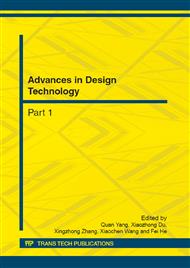p.1169
p.1173
p.1180
p.1186
p.1191
p.1197
p.1201
p.1205
p.1209
Numerical Simulation of Aluminum Alloy Wheel 13° Impact Test Based on Abaqus
Abstract:
In order to predict the result of impact test in the design phase and reduce the experimental times, which can save cost and shorten development cycle, a finite element model of aluminum alloy wheel 13-degree impact test is established based on Abaqus. All mechanical parts such as the standard impact block, the assembly of the wheel and the tire, the support and bolts are included in the finite element model. The predicted result of finite element analysis and the experimental result agree very well shows the finite element model is correct. The equivalent plastic strain value was also put forward as fracture criterion for the wheel in the impact test which realizes the transition from the qualitative analysis to the quantitative analysis in the development process of aluminum alloy wheel.
Info:
Periodical:
Pages:
1191-1196
Citation:
Online since:
November 2012
Authors:
Price:
Сopyright:
© 2012 Trans Tech Publications Ltd. All Rights Reserved
Share:
Citation:


